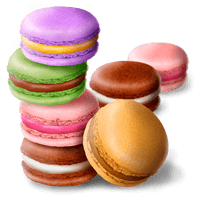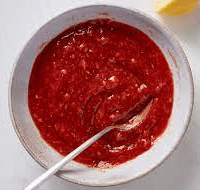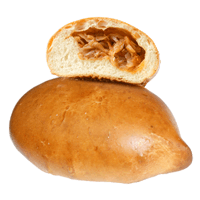Papadum nutrition: calories, carbs, GI, protein, fiber, fats
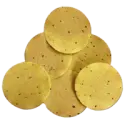
Carbs in papadum
Carbs compose 60% of the weight content of papadum. One hundred grams of papadum contains 59.87g of carbs, which covers 20% of the daily need (in the case of a 2000-calorie diet).
Papadum net carbs
Papadum is rich in net carbs and dietary fiber, containing 41.27g of net carbs and 18.6g of dietary fiber.
Compared to other foods in our database, papadum is in the top 22% of foods high in net carbs and the top 8% of foods high in dietary fiber.
The fiber content is remarkable in papadum.
Fiber content ratio for Papadum
Papadum Calories
Calories per 100g
Papadum provides an average level of calories. One hundred grams of papadum provides 371 calories.
Macronutrients chart
Comparison
Compared to all foods in our database, papadum is in the top 19% of foods high in calories.
Compared to other Indian breads mentioned below, papadum contains more protein and carbs, whereas others are richer in fats. The highest fat content is paratha.
| Food | Calories, per 100g |
| Papadum | 371 |
| Paratha | 326 |
| Chapati (Roti) | 299 |
| Naan | 286 |
Summary table & burning estimates
We have calculated the duration and number of calories a person will burn by performing a certain type of activity, measured by a method called Met or Metabolic Equivalent of a Task (1, 2).
The table below shows the time and type of activity a person should perform to burn 371 calories from 100g of papadum.
| 60kg person | 80kg person | 100kg person | |
| Walking | 1h 46 mins | 1h 20 mins | 1h 4 mins |
| Running | 34 min | 25.5 min | 20.5 min |
| Bicycling | 50 min | 37.5 min | 30 min |
| Aerobics | 51 min | 38.5 min | 30.5 min |
Top nutrition facts for Papadum

| Calories ⓘ Calories for selected serving | 371 kcal |
| Glycemic index ⓘ Gi values are taken from various scientific sources. GI values less than 55 are considered as low. Values above 70 are considered as high. | 46 (low) |
| Net Carbs ⓘ Net Carbs = Total Carbohydrates – Fiber – Sugar Alcohols | 41 grams |
| Acidity (Based on PRAL) ⓘ PRAL (Potential renal acid load) is calculated using a formula. On the PRAL scale the higher the positive value, the more is the acidifying effect on the body. The lower the negative value, the higher the alkalinity of the food. 0 is neutral. | -3.1 (alkaline) |
Papadum calories (kcal)
| Calories for different serving sizes of papadum | Calories | Weight |
|---|---|---|
| Calories in 100 grams | 371 |
Papadum Glycemic index (GI)
Mineral coverage chart
Mineral chart - relative view
Vitamin coverage chart
Vitamin chart - relative view
Protein quality breakdown
Fat type information
All nutrients for Papadum per 100g
| Nutrient | Value | DV% | In TOP % of foods | Comparison |
| Vitamin A | 13µg | 1% | 47% | |
| Calories | 371kcal | 19% | 19% |
7.9 times more than Orange
|
| Protein | 26g | 61% | 12% |
9.1 times more than Broccoli
|
| Fats | 3.3g | 5% | 60% |
10.2 times less than Cheese
|
| Vitamin C | 0mg | 0% | 100% |
N/A
|
| Net carbs | 41g | N/A | 22% |
1.3 times less than Chocolate
|
| Carbs | 60g | 20% | 16% |
2.1 times more than Rice
|
| Cholesterol | 4mg | 1% | 54% |
93.3 times less than Egg
|
| Vitamin D | 0µg | 0% | 100% |
N/A
|
| Magnesium | 271mg | 65% | 10% |
1.9 times more than Almonds
|
| Calcium | 143mg | 14% | 16% |
1.1 times more than Milk
|
| Potassium | 1000mg | 29% | 7% |
6.8 times more than Cucumber
|
| Iron | 7.8mg | 98% | 7% |
3 times more than Beef broiled
|
| Sugar | 0g | N/A | 100% |
N/A
|
| Fiber | 19g | 74% | 8% |
7.8 times more than Orange
|
| Copper | 1mg | 111% | 17% |
7 times more than Shiitake
|
| Zinc | 3.4mg | 31% | 27% |
1.9 times less than Beef broiled
|
| Phosphorus | 385mg | 55% | 12% |
2.1 times more than Chicken meat
|
| Sodium | 1745mg | 76% | 2% |
3.6 times more than White bread
|
| Vitamin E | 0.05mg | 0% | 91% |
29.2 times less than Kiwi
|
| Manganese | 1.6mg | 68% | 29% | |
| Selenium | 8.3µg | 15% | 62% | |
| Vitamin B1 | 0.28mg | 23% | 29% |
Equal to Pea raw
|
| Vitamin B2 | 0.26mg | 20% | 33% |
2 times more than Avocado
|
| Vitamin B3 | 1.5mg | 9% | 63% |
6.5 times less than Turkey meat
|
| Vitamin B5 | 0.92mg | 18% | 37% |
1.2 times less than Sunflower seeds
|
| Vitamin B6 | 0.29mg | 22% | 41% |
2.4 times more than Oats
|
| Vitamin B12 | 0µg | 0% | 100% |
N/A
|
| Vitamin K | 0.4µg | 0% | 82% |
254 times less than Broccoli
|
| Folate | 219µg | 55% | 18% |
3.6 times more than Brussels sprouts
|
| Saturated fat | 1.1g | 5% | 59% |
5.4 times less than Beef broiled
|
| Choline | 0.4mg | 0% | 97% | |
| Monounsaturated fat | 0.53g | N/A | 71% |
18.4 times less than Avocado
|
| Polyunsaturated fat | 1.1g | N/A | 42% |
41.1 times less than Walnut
|
| Tryptophan | 0.27mg | 0% | 54% |
1.1 times less than Chicken meat
|
| Threonine | 0.89mg | 0% | 61% |
1.2 times more than Beef broiled
|
| Isoleucine | 1.3mg | 0% | 48% |
1.4 times more than Salmon raw
|
| Leucine | 2.1mg | 0% | 51% |
1.1 times less than Tuna Bluefin
|
| Lysine | 1.7mg | 0% | 63% |
3.8 times more than Tofu
|
| Methionine | 0.37mg | 0% | 69% |
3.9 times more than Quinoa
|
| Phenylalanine | 1.5mg | 0% | 42% |
2.2 times more than Egg
|
| Valine | 1.4mg | 0% | 47% |
1.4 times less than Soybean raw
|
| Histidine | 0.72mg | 0% | 58% |
Equal to Turkey meat
|
| Caffeine | 0mg | 0% | 100% | |
| Omega-3 - EPA | 0g | N/A | 100% |
N/A
|
| Omega-3 - DHA | 0g | N/A | 100% |
N/A
|
| Omega-3 - DPA | 0g | N/A | 100% |
N/A
|
Check out similar food or compare with current
NUTRITION FACTS LABEL
Serving Size ______________
Health checks
Papadum nutrition infographic
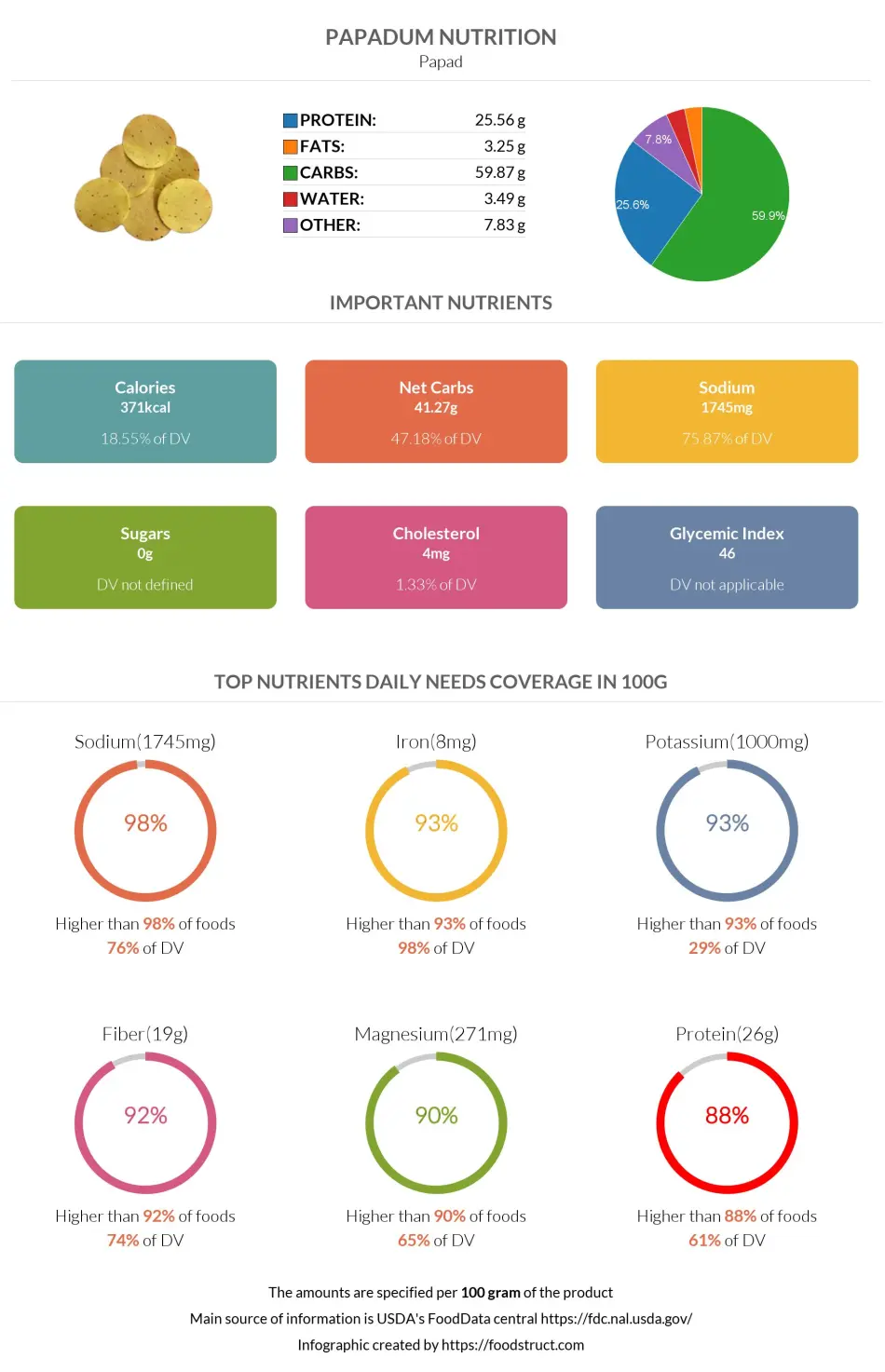
References
All the values for which the sources are not specified explicitly are taken from FDA’s Food Central. The exact link to the food presented on this page can be found below.

